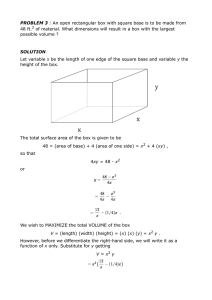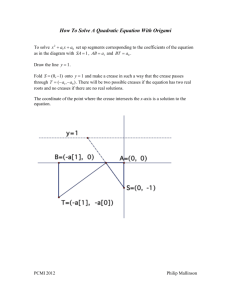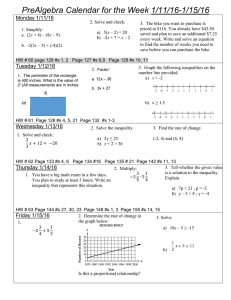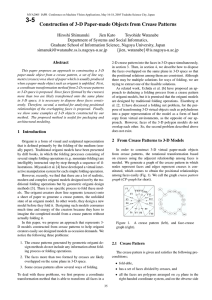PROBLEM 21 : A rectangular piece of paper is 12
advertisement
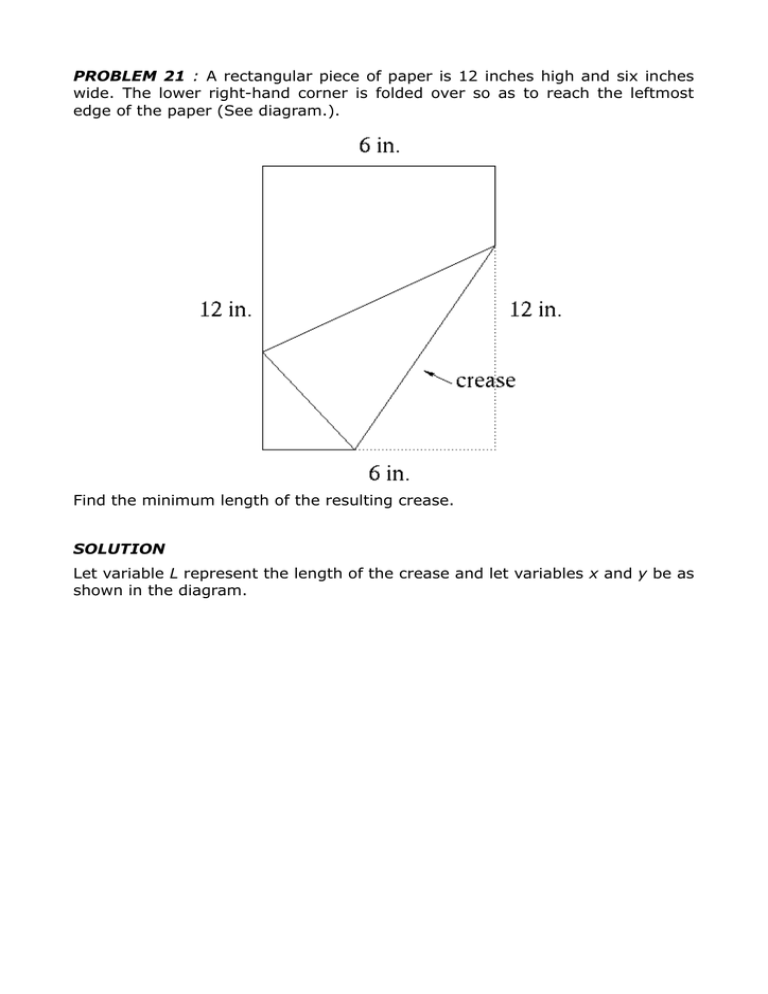
PROBLEM 21 : A rectangular piece of paper is 12 inches high and six inches wide. The lower right-hand corner is folded over so as to reach the leftmost edge of the paper (See diagram.). Find the minimum length of the resulting crease. SOLUTION Let variable L represent the length of the crease and let variables x and y be as shown in the diagram. We wish to write L as a function of x . Introduce variable w as shown in the following diagram. It follows from the Pythagorean Theorem that w2 + (6-x)2 = x2 , so that w2 = x2 - (x2 - 12x + 36) = 12x - 36 and . Find a relationship between x and y . The total area of the paper can be computed from the areas of three right triangles, two of which are exactly the same dimensions, and one rhombus. In particular 72 = (total area of paper) = (area of small triangle) + 2(area of large triangle) + (area of rhombus) = (1/2)(length of base)(height) + 2(1/2)(length of base)(height) + (average height)(length of base) , i.e., . Solve this equation for y . Then , , , and . We wish to MINIMIZE the LENGTH of the crease . Before we differentiate, rewrite the right-hand side as a function of x only. Then . Now differentiate this equation using the chain rule and quotient rule, getting (Factor out x from the numerator.) =0, so that (If , then A = 0 .) . Thus, (If AB = 0 , then A = 0 or B = 0 .) x=0 or , , -2 (x-3)2 = 3x - 18 , -2 (x2 - 6x + 9) = 3x - 18 , -2 x2 + 12x -18 = 3x - 18 , -2 x2 + 9x = 0 , x ( -2x + 9 ) = 0 , so that (If AB = 0 , then A = 0 or B = 0 .) x=0 or ( -2x + 9 ) = 0 , i.e., x = 9/2 . Note that since the paper is 6 inches wide, it follows that adjoining sign chart for L' . If x = 9/2 in. and in. in. , then in. is the length of the shortest possible crease. in. . See the
